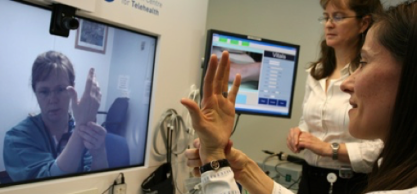A new year, new legislation, new legal issues. New York rang in 2015 by becoming the 22nd state to enact a telehealth parity law. The law requires that deductibles, co-insurance, and other coverage conditions for telemedicine be treated the same as payments for typical in-person hospital visits. As such, commercial insurers will be required to cover telehealth and telemedicine services, starting at the end of this year. The new law is an exciting development for patients, especially in rural areas, who have previously had limited options in health services. For payers and providers, however, questions remain about the feasibility of this law and how it could impact the entire healthcare reimbursement landscape.
Telehealth and telemedicine have been among the most significant developments in healthcare delivery in decades. Though the terms telehealth and telemedicine are often mistakenly used interchangeably in everyday conversation, they in fact refer to separate modes of delivery, as made explicit by the New York law. Under the statute, “telehealth” means healthcare delivery services through “communications technologies consisting of telephones, remote patient monitoring devices or other electronic means.” The electronic communications facilitate the assessment, diagnosis, consultation, treatment, education, and management and self-management of care while the patient is at the “originating site”—the place where the patient is located when services are provided—and the healthcare provider is at a “distant site.” Telehealth also encompasses non-real-time means of “communicating” health data, and includes devices that transmit a patient’s vital signs to the health care provider. “Telemedicine,” on the other hand, refers to real-time two-way audio-visual communication aimed at assessment, diagnosis, consultation, etc. Thus, telemedicine is more akin to a typical doctor’s visit, with the patient interacting with the healthcare provider as if in the examination room.
Both telemedicine and telehealth have been lauded and promoted as ways to significantly reduce healthcare costs and improve access to care, especially for rural, disabled, and low-income patients. But the feasibility of reimbursing providers for these services has continued to cause debate. The majority of states do not require commercial payers to cover these services.
Under the New York law, however, all commercial insurers must now cover telehealth and telemedicine services as they would otherwise cover that service for in-person visits. Reimbursement is required to be treated the same as well, with all deductibles and co-insurance reflecting the in-person prices. Some, however, are uncertain whether services that are specifically tailored to telehealth—such as remote monitoring—would need to be covered by insurers under the new law. Since these services would not necessarily have been covered by insurers before the law’s enactment, the statute appears ambiguous on this point. Thus, either future rulemaking or litigation will have to guide payers to an answer.
If these types of laws really reduce costs and benefit patients, then why have most states refrained from enacting similar telemedicine-telehealth parity laws? The answer may lie in convoluted state licensing requirements. In 2014, the American Telemedicine Association performed a state-by-state study of telemedicine programs, finding that outdated licensing laws can prevent or create obstacles for physicians wanting to perform these services. However, the Federation of State Medical Boards has developed a new set of guidelines to ease interstate telehealth licensing, with the aim of easing these obstacles. Additionally, calls for improvement in reimbursement of telemedicine for both Medicare and Medicaid could gain greater traction as states continue to enact parity laws. With patients continuing to clamor for these services, and with medical costs continuing to rise, we may see more states follow in the footsteps of New York and the other 21 states to address the seemingly unstoppable rise of telehealth-telemedicine.
